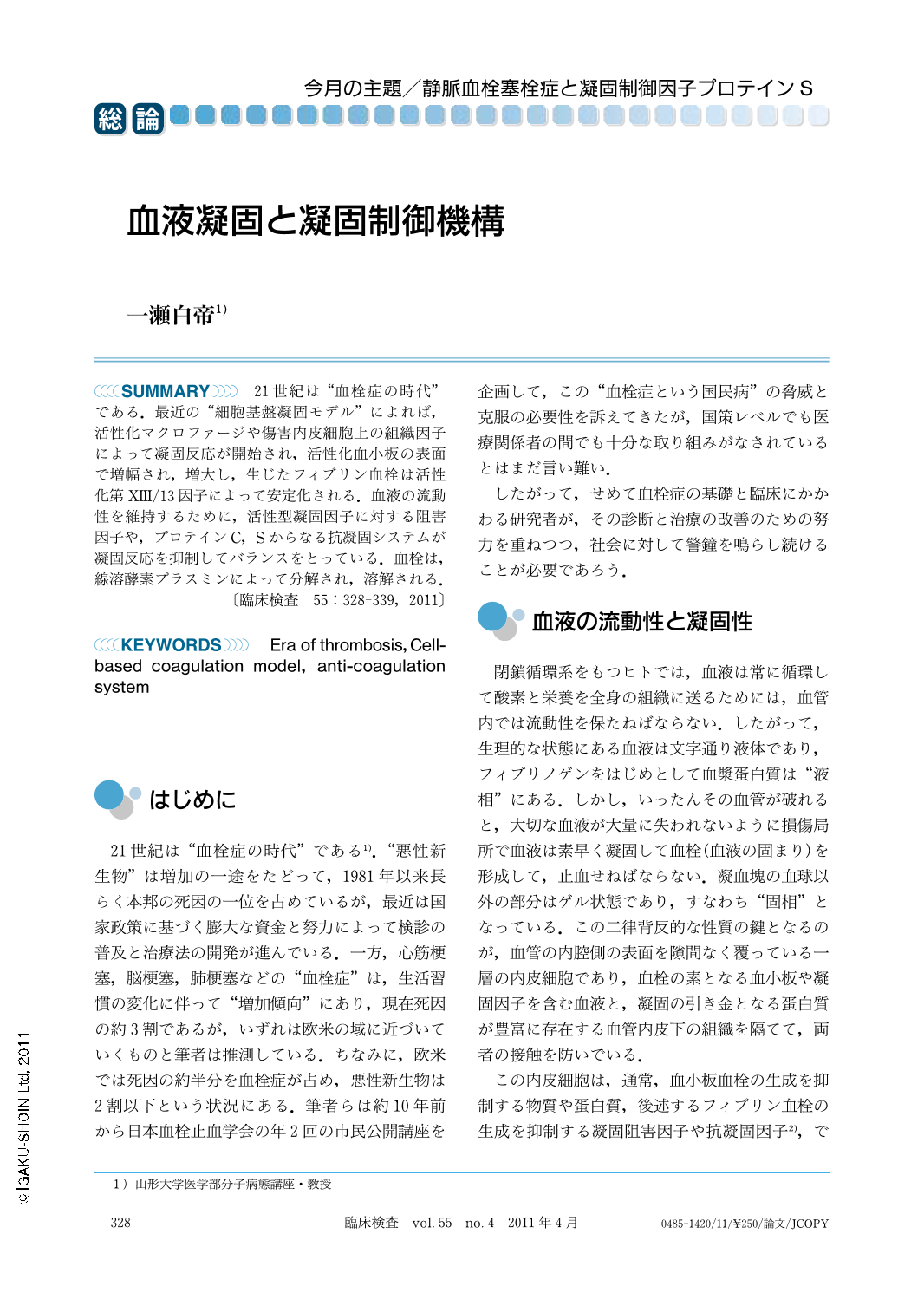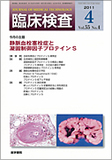Japanese
English
- 有料閲覧
- Abstract 文献概要
- 1ページ目 Look Inside
- 参考文献 Reference
21世紀は“血栓症の時代”である.最近の“細胞基盤凝固モデル”によれば,活性化マクロファージや傷害内皮細胞上の組織因子によって凝固反応が開始され,活性化血小板の表面で増幅され,増大し,生じたフィブリン血栓は活性化第XⅢ/13因子によって安定化される.血液の流動性を維持するために,活性型凝固因子に対する阻害因子や,プロテインC,Sからなる抗凝固システムが凝固反応を抑制してバランスをとっている.血栓は,線溶酵素プラスミンによって分解され,溶解される.
The 21st century may be called ‘an era of thrombosis'. Recently, a paradigm shift occurred, to a novel ‘cell-based coagulation model'. The coagulation cascade is initiated by tissue factor on the cell-surface of activated macrophages and damaged endothelial cells and on the exposed subendotherial matrix, and then amplified and propagated on the surface of activated platelets. The activated platelets are thrombogenic because of phosphatidylserine-bound clotting factors. Activated factor XⅢ/13 by thrombin stabilizes fibrin monomers. To maintain the blood fluidity, various serine-proteinase inhibitors against activated clotting factors and anti-coagulation systems including Proteins C and S counterbalance the coagulation system. Finally, fibrin clots are cleaved and lysed by a fibrinolytic enzyme plasmin, which is generated by plasminogen activators. These reactions determine the formation and fate of blood clots.

Copyright © 2011, Igaku-Shoin Ltd. All rights reserved.


